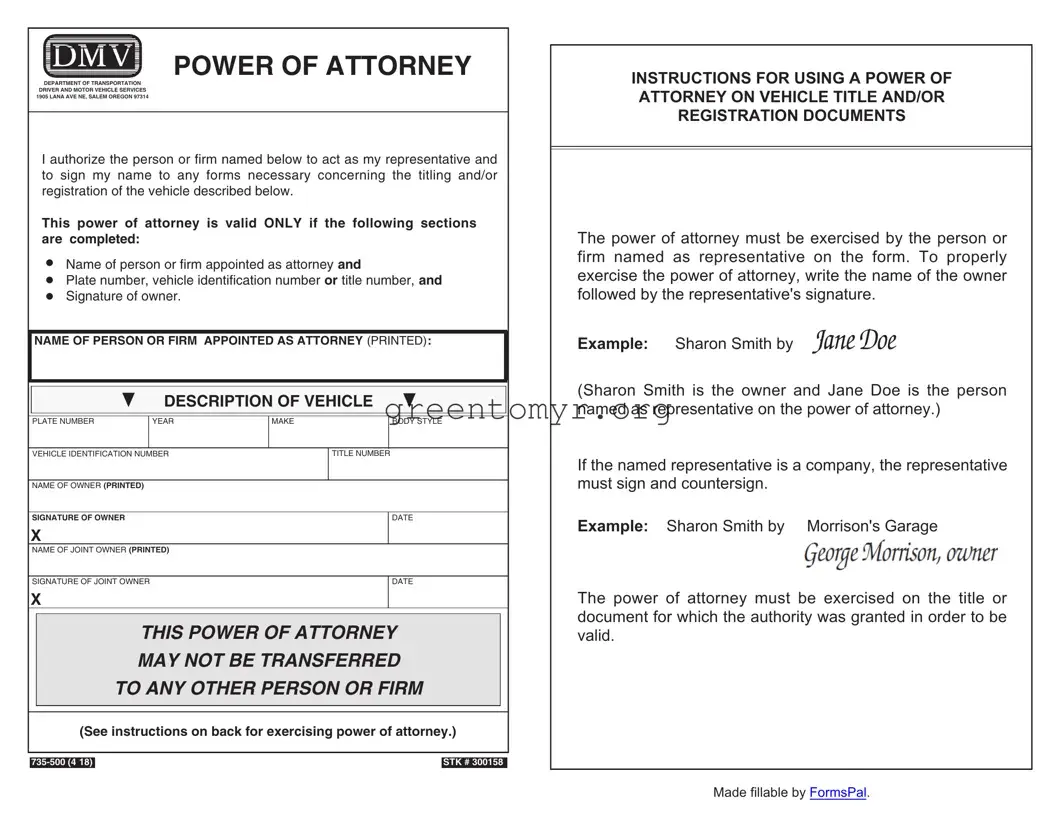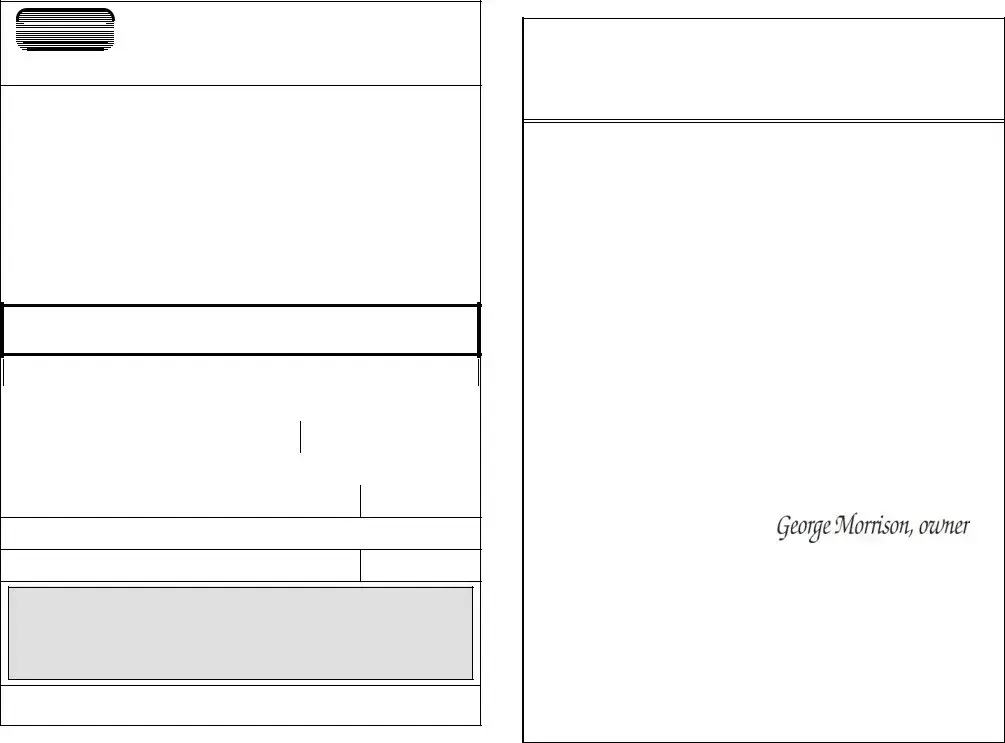The Vehicle Power of Attorney (POA) form 735-500 serves as a crucial legal document that enables an individual, known as the principal, to designate another person, the agent, to act on their behalf regarding vehicle-related transactions. This form is particularly important when a vehicle owner is unable to personally attend to matters such as title transfers, registrations, or other necessary paperwork due to various reasons like absence or incapacity. By completing this form, the principal grants the agent specific authority, ensuring that important tasks can proceed without delay. The form typically requires essential information, including the names and signatures of both the principal and the agent, along with details about the vehicle in question—such as the make, model, and VIN. Not only does this form streamline processes at the Department of Motor Vehicles, but it also protects the interests of both parties involved. Providing clarity and legal standing, the 735-500 form is an integral tool for vehicle owners navigating their responsibilities and ensuring their intentions are upheld even in their absence.



 POWER OF ATTORNEY
POWER OF ATTORNEY